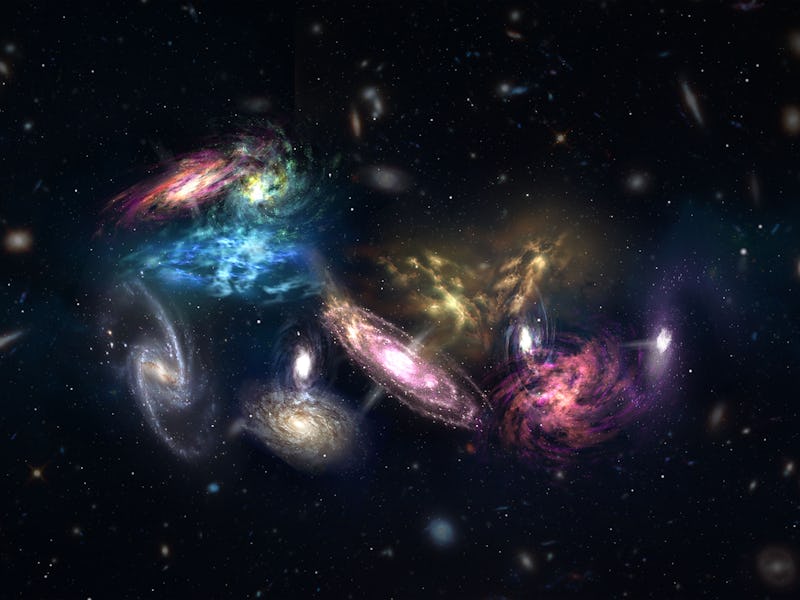It’s easy to take our quiet cosmic neighborhood for granted. Sure, an asteroid might graze past Earth every now and then, but the sheer chaos seen in other corners of space makes the solar system seem like a walk in the park. And in a new study, an international group of astronomers further proved that space is literally a carnival of carnage.
The researchers used the Atacama Large Millimeter/submillimeter Array (ALMA) in Chile to spot 14 galaxies ready to slam into each other. This intergalactic pileup, dubbed protocluster SPT2349-56, will eventually fuse into one of the most massive galactic clusters in the known universe, a process known as a “megamerger.” In a paper published in the journal Nature, the team explained how being able to watch the creation of such a gargantuan stellar formation allows them to study some of the earliest and most catastrophic formative processes of the universe.
Zooming in to the galaxies discovered by ALMA that are evolving into a galaxy cluster.
Join our private Dope Space Pics group on Facebook for more strange wonder.
“Having caught a massive galaxy cluster in throes of formation is spectacular in and of itself,” Scott Chapman, an astrophysicist at Dalhousie University, says in a statement. “But, the fact that this is happening so early in the history of the universe poses a formidable challenge to our present-day understanding of the way structures form in the universe.”
SPT2349-56 is located roughly 12.4 billion light-years away from Earth. The universe is estimated to be 13.8 billion years old, so this means the protocluster’s light began traveling towards us when the universe was a fresh 1.4 billion years young. That’s over 3 billion years before the Earth was formed, making this group of merging galaxies a relic of the Big Bang. If the age of these ancient star systems doesn’t freak you out, what will happen when they merge?
During the first few million years of the universe’s life, normal matter and dark matter began grouping up into constantly growing concentrations, giving rise to galaxy clusters. These can be groups of up to a thousand galaxies, with masses comparable to a million billion stars. Massive groups of galaxies like these are the largest-known gravitationally bound structures in the universe. They can contain a host of supermassive black holes and release X-ray emitting gas that can reach temperatures of over a million degrees.
Being able to study a developmental, yet outright cataclysmic process of the universe gives astronomers hints about exactly how the Big Bang created our home and the endless amount of other worlds out there. Of course, all of this is much more enjoyable and a lot less deadly from many billions of light-years away.
We’ll gladly keep watching all of this go down, but please just stay waaaay over there. We need our space.
